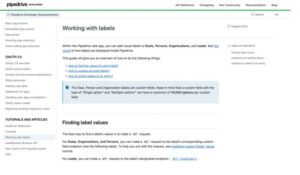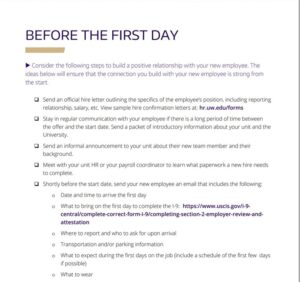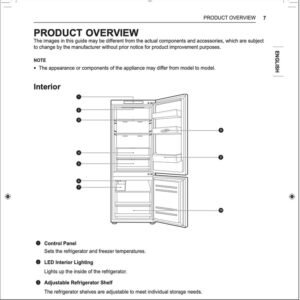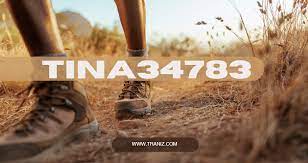
If you’ve ever read a user manual to learn how to use something, you’ve read a technical document. With the world becoming increasingly innovative and content reigning as the King, technical writing shall always be in demand.
One more way to learn technical writing is to ask a specialized academic writing service like CustomWritings.com for professional essay help. But first, let’s try to figure out the question on our own.
What Is Technical Writing?
Technical writing is any piece of writing intended to explain complicated, technical, or specialist information to audiences unfamiliar with it. Technology, robotics, software applications, medicine, financial management, and consumer electronics are some technical and vocational fields where it is commonly used.
There are countless cases of technical writing that we encounter in daily life. This includes the creation of technical manuals and the creation of comprehensive guides. In addition, technical writing may include preparing journal articles, jotting down support documents, as well as other technical documentation.
The goal is to help the final user in comprehending any technical features of the program or service.
In other instances, technical writing necessitates the writer’s knowledge of a subject. Pharmaceutical companies, for example, may hire clinical people to write their content because they have the necessary knowledge.
What Are the Examples of Technical Writing?
Here are a few examples of technical writing assignments:
- operation manuals for specific tools and products training material intended to educate new employees regarding their role
- promotional brochures that encourage staff and customers to take full advantage of a company’s promotions
- online blog posts that may be insightful or persuasive but necessitate some technical knowledge
- Press releases are used to share official company news.
Pipedrive’s Developer Document

Pipedrive excels at developer documentation, which is critical for technical communication. This technical document is intended for product users and must be simple to understand, even if it contains complex information. Take note of the page’s use of links and callout boxes.
Digimind Footprint Ranking Report

Digimind goes above and beyond with their graphics in this industry report/white paper. It’s visually appealing and informative while remaining extensively professional and understandable. Being a B2-B company does not imply using only text-based marketing copy.
University of Wisconsin Toolkit

This employee handbook is readable with bullet points and simple sentences that make it easier to read. The HR department also includes useful links to the relevant documents that new employees must download or complete.
LG Refrigerator Manual

LG’s basic user guide provides users with a review of their product and assists them in making good use of it. (The diagram can be useful when an online article instructs you to alter the control panel, but you don’t know which knob to turn.)
Learn in Practice: 8 Bad Technical Writing Examples
Here are a few examples of bad technical writing.
Poorly-written User Manual
Poor user manuals frustrate readers and leave them with more queries than answers. Customers try to follow instructions, but they are unsuccessful. Inadequate user documentation misguides users, giving them the incorrect impression of using a product or instrument. It detracts from the user experience. Poorly written guidelines cannot properly guide users.
Inaccurate Titles
The titles of bad technical documents are uninformative and confusing. Users must assume what the title is implying. They must read the text and try to find what details they will obtain in the portion below. They can’t find their way because they don’t know where they are.
Unordered Lists
In a poorly-written technical document, the lists are not ordered. Instead, simple bullet-point lists are used. Following such a list when attempting to follow guidance is extremely inconvenient. Technical documents that are poorly written are always a mess.
No Use Of Pictures
Poor technical documentation contains few or no images. First and foremost, this appears to be careless. Second, it makes readers’ comprehension more difficult.
Another way to sabotage a helpful topic is to include pictures without appropriate captions – these are extremely difficult to decipher.
Inconsistency
Inconsistent technical documents are burdensome to read. This occurs because more than one technical writer may be working on one project at the same time, resulting in text diversity. For example, various terms are used to describe the same processes; page outlines can look completely different, and so on.
Bad Readability Score
Bad technical documents have bad readability scores. You must put in some effort to understand all the words and break down long, complicated phrases. In addition, conditions are not defined, and the text contains only a few references.
To write successful technical documents, keep in mind that a plethora of grammatical rules govern how we use the English language, both in terms of mechanics and usage. These are critical guidelines to ensure an immaculately written document.
Use Of Dangling Modifiers
Use modifiers sporadically but correctly. Misplaced modifiers can be lethal: they wreak havoc on technical report comprehension and should not be used. Dangling modifiers increase the severity of loss of comprehension tenfold. When you see dangling or misplaced modifiers, remove them.
Phrases and Clauses
Technical writers must also be careful not to use too many recurring phrases. Gerund phrases are permitted, but only on rare occasions, possibly two or even three per page. Participial phrases are more difficult to recognize, but they are also useful while using imperative speech. Noun and relative clauses can suffocate great writing in a moment. Subordinate clauses can also be misleading to your audience. However, most clauses must be coordinated. There is an exception to this, like when a dependent remark tends to rely on an active voice.
Is It Worth Passing a Technical Writing Course?
Technical Writing, like any other field, has its own set of processes, guidelines, best practices, and so on.
Taking a technical writing course will allow you to learn all you need to know while also giving you a boost of confidence to help you get started on your writing journey.
Here are a few technical writing courses to consider:
- Google Technical Writing Training (Free)
- Technical Writing Course on Udemy (Paid)
- Technical Writing Bootcamp on Hashnode (Free)
Be Willing To Learn
Technical writers are perpetual learners. Because the job entails communicating complicated concepts in simple terms, you should know the subject appropriately. Alternatively, be keen to learn about the topic.
This is fantastic because you can become an expert on the matter with each latest innovative document you study and write.
Technical writing also improves your sense of consumer empathy. It allows you to focus on how readers or consumers of a product feel instead of what you think.
This article explained what technical writing is, discussed examples of good and bad technical writing, as well as shared a few courses on technical writing.




